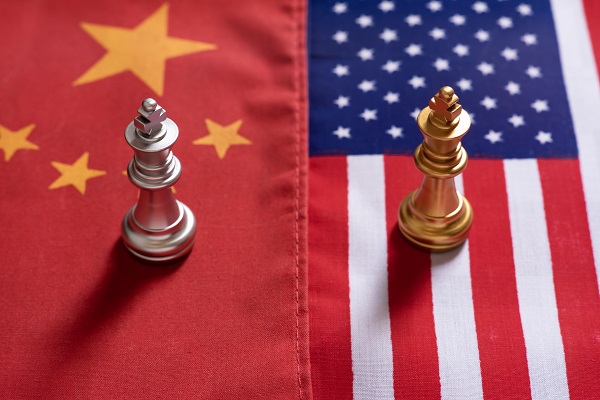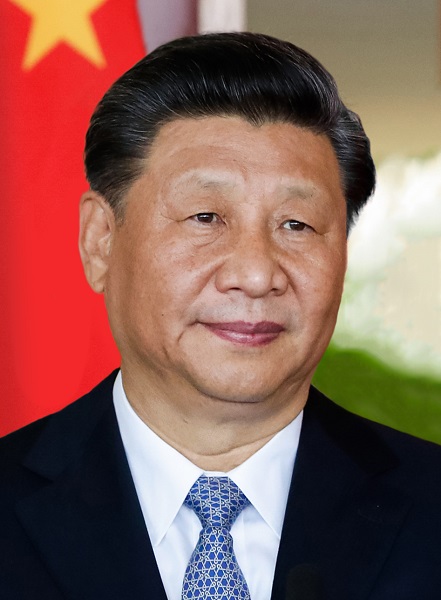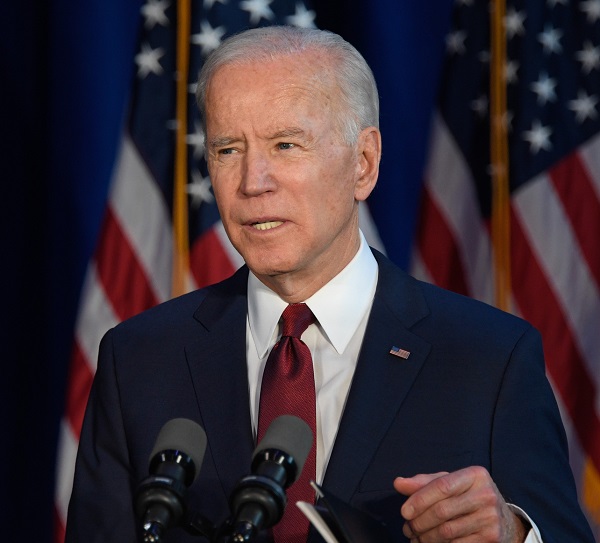 All over the world, HPC has burst into geopolitics. HPC – broadly defined here as advanced supercomputing combined with big AI – is at the fault lines of national and regional rivalries, particularly between the U.S. and China, expanding in power, cost, intensity and in potential impact. Which is to say that global players put supercomputing at the heart of their defense, surveillance, healthcare and economic competitiveness strategies.
All over the world, HPC has burst into geopolitics. HPC – broadly defined here as advanced supercomputing combined with big AI – is at the fault lines of national and regional rivalries, particularly between the U.S. and China, expanding in power, cost, intensity and in potential impact. Which is to say that global players put supercomputing at the heart of their defense, surveillance, healthcare and economic competitiveness strategies.
Is it going too far to say that supercomputing now plays a role similar to the nuclear arms and space races in the Cold War era? Just as Sputnik spurred U.S. determination to beat the USSR to the moon, and the two countries kept pace with each other’s nuclear warhead arsenals, superpower policy makers today regard their adversary gaining significant supercomputing superiority to be intolerable.
The technology rivalry extends well beyond HPC, of course, into an emerging US/China sequestration of supply chains, social media, networking gear, microprocessors, cryptocurrencies – the underpinnings of the technology-driven world of tomorrow.
“What we are seeing is the partitioning of the internet, according to geopolitical winds,” Shahin Khan, partner at consulting firm OrionX.net, told us. “I also think that we are moving from geopolitics to ‘techno-politics,’ and that the significance of technology in determining balances of power around the world is becoming more pronounced.
“That means we are in a new zone, a new regime, where technological advances have a much more direct impact on geopolitical considerations than they did before. Certainly with AI and 5g, the pandemic, robotics and cryptocurrencies, with quantum computing, we’re seeing that every one of these technology megatrends is becoming a race for national competitiveness. It means that technology is no longer its own thing, it is central to how balance of power on the global scene is going to pan out.”
In the same vein, Bob Sorensen, SVP of Research at HPC industry analyst firm Hyperion Research, highlights how geopolitical powers, including Europe, China and Japan, are pursuing “indigenous technologies” strategies, freeing them from dependence on sources of technology they don’t directly control.

Xi Jinping

Joe Biden
Citing a 2018 speech by China President Xi Jinping on that country’s latest five-year plan, the translation of which was released earlier this year, Sorensen said, “One of the key points that they make in China is indigenous innovation. The key point there, it’s not that China wants to become more innovative per se, it’s that they want to be able to do what everybody else in the world can do, but they want to be able to do it in China, by themselves. So it’s not innovation in the sense that this is a new thing that no one’s ever seen before. It’s, ‘Hey, Intel just did this, let’s see if we can do the exact same thing. That’s their working principle of of indigenous innovation: ‘Can we control our own destiny?’”
Sorensen said this trend took hold as R&D of extreme supercomputing moved toward the exascale (a billion billion calculations per second).
“It happened in this most recent round of exascale systems development,” Sorensen said, “where China was using indigenous technology and Chinese-built components, Japan turned to Fujitsu, the EU started the European processor initiative – the desire to use indigenous technology has become key.”
Later this year, the first of three U.S. exascale-class supercomputers is scheduled to be installed at Oak Ridge National Laboratory. The status of China’s exascale effort in recent years has been somewhat shrouded. The world’s first exascale system, when measured on the HPL-AI benchmark, was stood up last year in Japan, the Fujitsu Arm-powered Fugaku system at the Riken Center for Computational Science (see also yesterday’s unveiling of the Perlmutter supercomputer at NERSC).
What comes after exascale is a point of focus for HPC R&D strategists; how governments will support and fund it is a point of focus of lawmakers and other government officials. In the U.S., California congressperson Rep. Jay Obernolte (R) introduced the Next Generation Computing Research & Development Act earlier this week that includes a “Beyond Exascale Computing Program.”
“Investing in research like this is what’s needed to keep the U.S. ahead of foreign competitors like the Chinese Communist Party, so I’m proud to join Rep. Obernolte on this important bill,” said Rep. Frank Lucas, R-Okla., a co-sponsor of the proposed bill.
“The future of innovation lies in our ability to unlock new answers about the workings of our world,” Rep. Obernolte said in a prepared statement. “Those answers will only come with the help of the next generation of supercomputers.”
The price tag for the American exascale push has been high – DOE’s Exascale Computing Project has received funding of $460 million to drive the build-out of an exascale ecosystem while the country’s first three exascale systems are expected to cost $600 million apiece.
How much federal funding post-exascale supercomputing will receive is unknown – Rep. Obernolte’s calls for four initial spending measures totaling about $90 million. If passed, the bill will instruct the Department of Energy to put in place a “research, development, and demonstration program to advance computational and networking capabilities to analyze, model, simulate, and predict complex phenomena relevant to the development of new energy technologies and the competitiveness of the United States.’’
The bill also includes an effort to develop “a strategy for achieving computing systems with capabilities beyond exascale computing systems” and support R&D of energy efficient computing technologies for “advanced computing applications in high performance computing, artificial intelligence, and scientific machine learning and quantum computing.”
The bill, referred to the House Committee on Science, Space, and Technology, comes in the midst of longstanding technology and trade tensions between the U.S. and China. And just as wars, including cold ones, tend to draw support from otherwise warring political groups, the Biden administration and Capitol Hill Republicans strike much the same note when discussing the U.S. policy on China and technology.
In fact, the new administration has generally left in place the technology trade restrictions established by former President Trump. In April, President Biden extended Trump’s U.S. entity list to include seven organizations in China involved in supercomputing and thought to have ties to China’s communist government and military.
“Supercomputing capabilities are vital for the development of many—perhaps almost all—modern weapons and national security systems, such as nuclear weapons and hypersonic weapons,” US Secretary of Commerce Gina Raimondo said in a statement accompanying the extension of the entity list.
 Earlier this month, she stated she will closely enforce the Entity List restrictions and other technology export control mandates. An article in Export Compliance Daily reported: “We’re not joking around,” Raimondo told the House Appropriations Subcommittee on Commerce, Justice, Science and Related Agencies May 6. “We are going to enforce the requirements, and we’re going to do that to the fullest extent possible.”
Earlier this month, she stated she will closely enforce the Entity List restrictions and other technology export control mandates. An article in Export Compliance Daily reported: “We’re not joking around,” Raimondo told the House Appropriations Subcommittee on Commerce, Justice, Science and Related Agencies May 6. “We are going to enforce the requirements, and we’re going to do that to the fullest extent possible.”
And on Wednesday, Florida Sen. Marco Rubio (R) announced he had filed 22 amendments to a China policy bill now working its way through Congress that would, among other measures, protect U.S. intellectual property.
“The ways in which the United States and the free world address the challenges posed by the Chinese Communist Party (CCP) will define the 21st century,” Rubio said. “The CCP will stop at nothing to achieve its objective of reshaping the international rules-based system to its benefit. Confronting the CCP’s threats and challenges will take a whole of nation approach, and part of that means strengthening our resiliency at home, ensuring the CCP cannot exploit America’s open society, and to hold the CCP accountable for its malign activities around the world.”
Another bill, the Innovation and Competition Act, appears to be close to approval by the U.S. Senate and also is drawing bipartisan support. The legislation is designed, according to Senate Majority Leader Chuck Schumer (D., N.Y.), to “halt a gradual decline as the world’s leader in scientific research and innovation ‘and lay the foundation, instead, for another American century’” according to a story in today’s Wall Street Journal. “That’s why this is a moment in history that future generations could well look back on as a turning point for American leadership in the 21st century,” Schumer said.
On the Republican side, Senate Minority Leader Mitch McConnell is quoted by the Journal: “There’s broad bipartisan agreement that America needs to upgrade our competitiveness with China….”
A “long twilight struggle,” to use John F. Kennedy’s famous Cold War phrase, could well apply to what is likely to be a decades-long technology-driven rivalry between the U.S. and China, dense with moves and countermoves. Commenting on the 2018 speech by President Xi referenced earlier, the Mercator Institute for Chinese Studies (MERICS) think tank said last month:
“The decision to publish this nearly three-year-old speech at this point in time is significant: It came just four days after the formal approval of the 14th Five-Year Plan, which places innovation front and center of China’s modernization drive … The speech is a powerful reminder to cadres that the government’s ambitions of turning China into a ‘world S&T superpower’ and achieving tech self-reliance have long been set in stone. The message of the speech and the FYP is clear: China’s self-sufficiency drive is a strategic pillar of China’s national development that will be pursued at all costs.”



